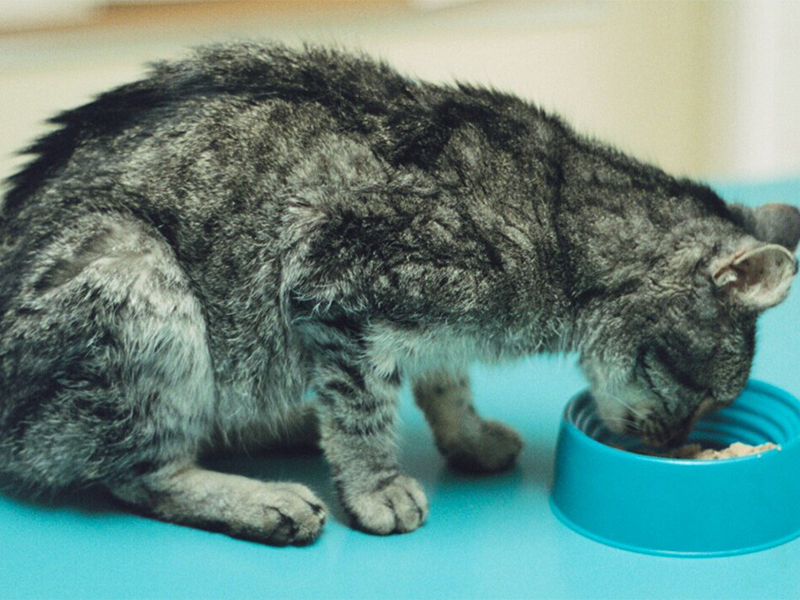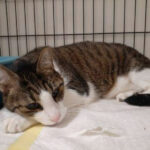
Feline Hyperthyroidism
Hyperthyroidism is characterized by the overproduction of thyroid hormone and a subsequent increase in metabolic rate. This disease is common in older cats.

Cats with this disease will have weight loss due despite an increased appetite. Affected cats are often restless, and may become cranky or aggressive. They may have increased water consumption and urination. It is also common for hyperthyroid cats to exhibit increased vocalizing, particularly at night. They may develop periodic vomiting or diarrhoea, and fur may appear unkempt. In some cats, anorexia develops as the disease progresses.
Two secondary complications of hyperthyroidism can be significant; hypertension (high blood pressure) and a particular form of heart disease called thyrotoxic cardiomyopathy.
Diagnosis of feline hyperthyroidism is generally made by a blood test and there are three main ways to treat a cat with Hyperthyroidism:
- Medication – There is a medication called Methimazole which is an antithyroid medication used to treat hyperthyroidism. It is either given by mouth or applied topically to the skin.
- Surgical – Despite most hyperthyroid cats being quite old, surgery usually produces dramatic results. There is no need for an extended stay in the hospital, and the cost for this treatment is usually less than for radioactive iodine treatment. However, this is only useful for those cats with an enlarged thyroid gland.
- Radioactive iodine treatment – This is only available through specialist centres. The cat is given a capsule containing radioactive iodine, which is taken up into the gland and kills the gland tissue. It is a very safe and effective treatment, but it involves a stay in hospital in a special lead-lined room until the level of radioactivity in the cat is deemed safe – usually 7- 10 days.




